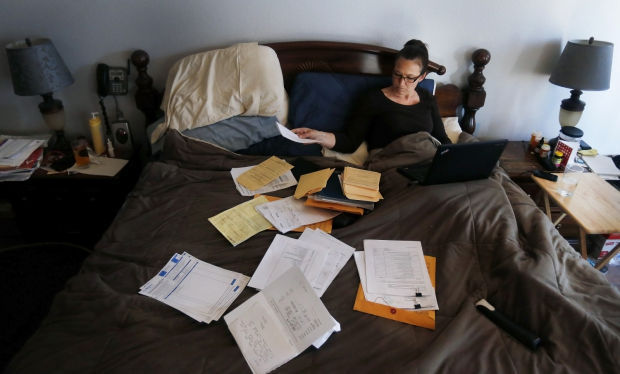It was a Thursday afternoon in October when Cynthia Drummond felt a sharp pain in her lower right back.
At first she thought the pain was kidney stones. She’d had them before, and this pain was just as bad, if not worse.
Then she feared it was a cancerous tumor. After three months of medical tests and doctors visits, Drummond, 48, appears to have the answer — valley fever.
A busy accountant, Drummond lives in Benson with her husband, who works in law enforcement, and her 13-year-old stepdaughter. Until October, she commuted to her job in Tucson. She now spends six hours a day working from her bed, her computer on her lap.
She is tired all the time, and on painkillers for the nodule in her lung that’s causing her back pain. She gets night sweats and often has a low-grade fever. Her joints ache. Each time she breathes in, it hurts.
On the rare occasions when she drives, she carries an oxygen tank and emergency inhaler in her car. And since she can’t drive while on painkillers, she must endure pain that is, at times, agonizing.
When a coccicioides spore is inhaled into the lung, it can change into a larger, multicellular structure called a spherule. The spherule grows and bursts, releasing endospores and creating more spherules. Symptoms generally occur within three weeks of exposure.
Nodules are lesions left from the infection, and often don’t cause any pain. But the location of Drummond’s nodule has complicated her case.
Drummond can’t know for certain that her nodule is valley fever, because the tumor is in such a precarious spot at the bottom of her lung that doing a biopsy could result in a puncture to her diaphragm, threatening her life. Doctors have told her they are 93 percent certain it’s not lung cancer.
Her blood panels for valley fever, which test for antibodies, have come back negative, but false negatives are common, said Dr. John Galgiani, a physician who is director of the UA’s Valley Fever Center for Excellence.
Drummond now has her fingers crossed that the antifungal fluconazole medication she began taking in January will shrink the nodule.
Otherwise, she faces a risky surgery.
“You just feel crappy, like you have the flu all the time,” she said. “You have no idea what it takes for me to get up in the morning.”





